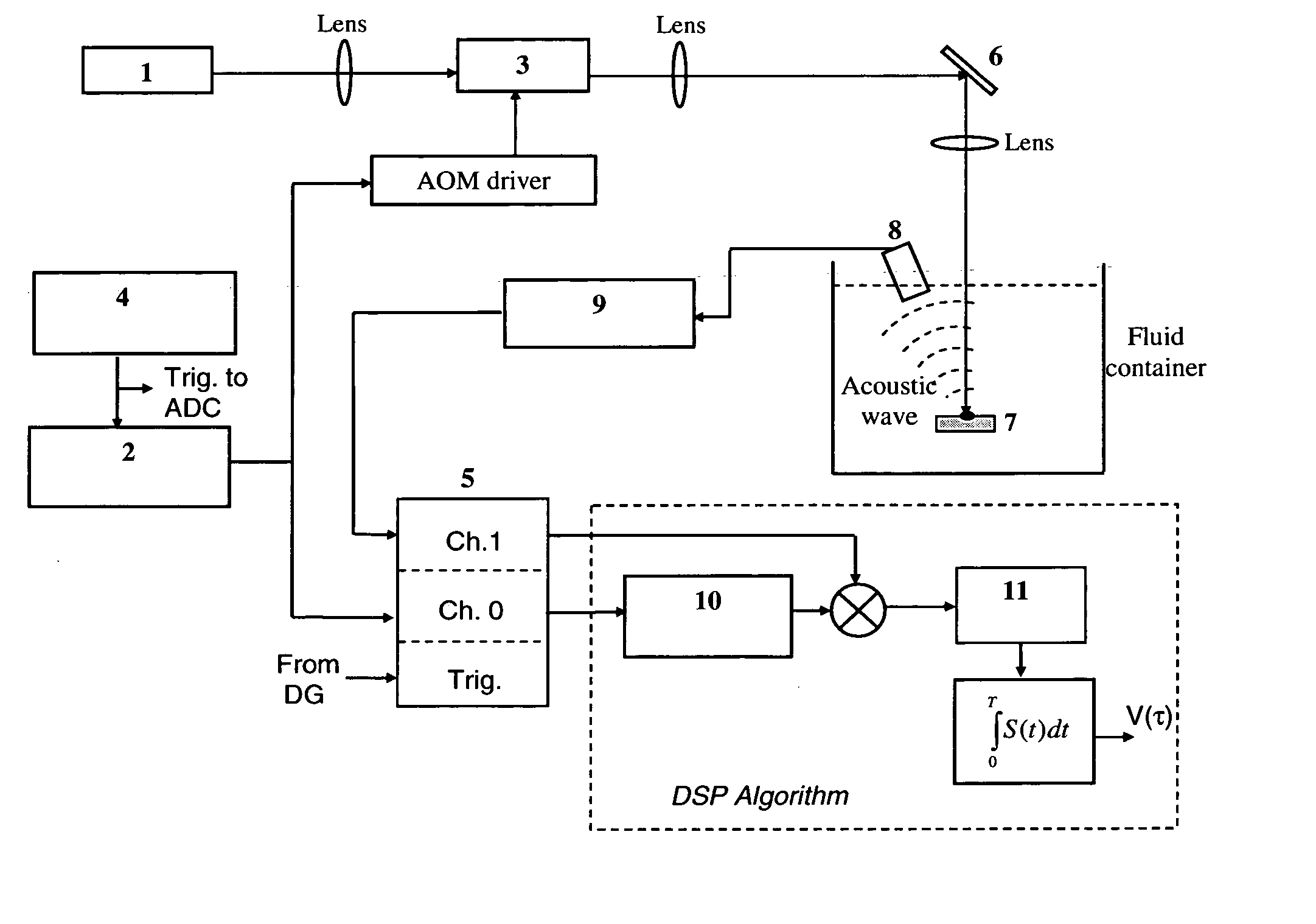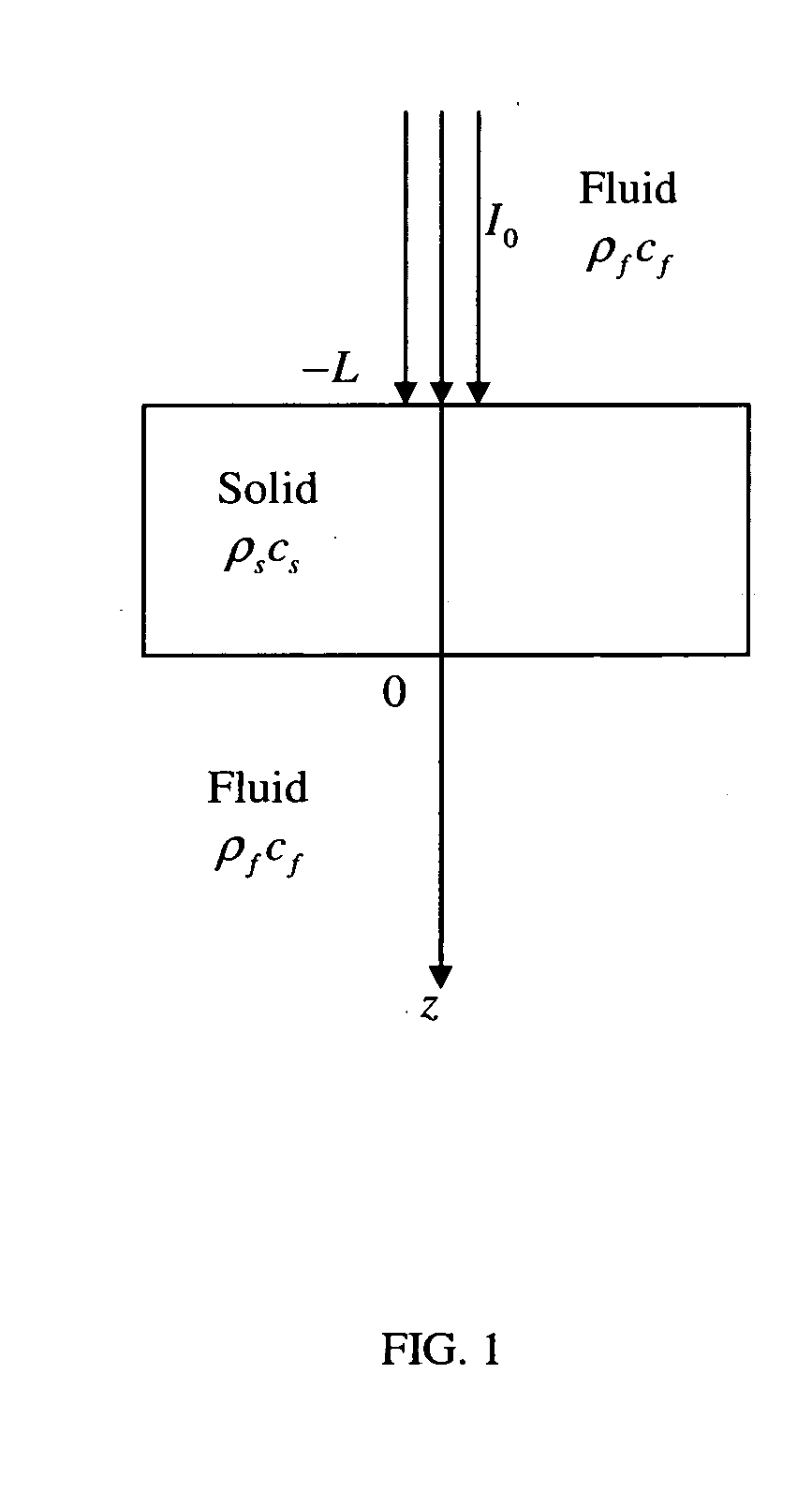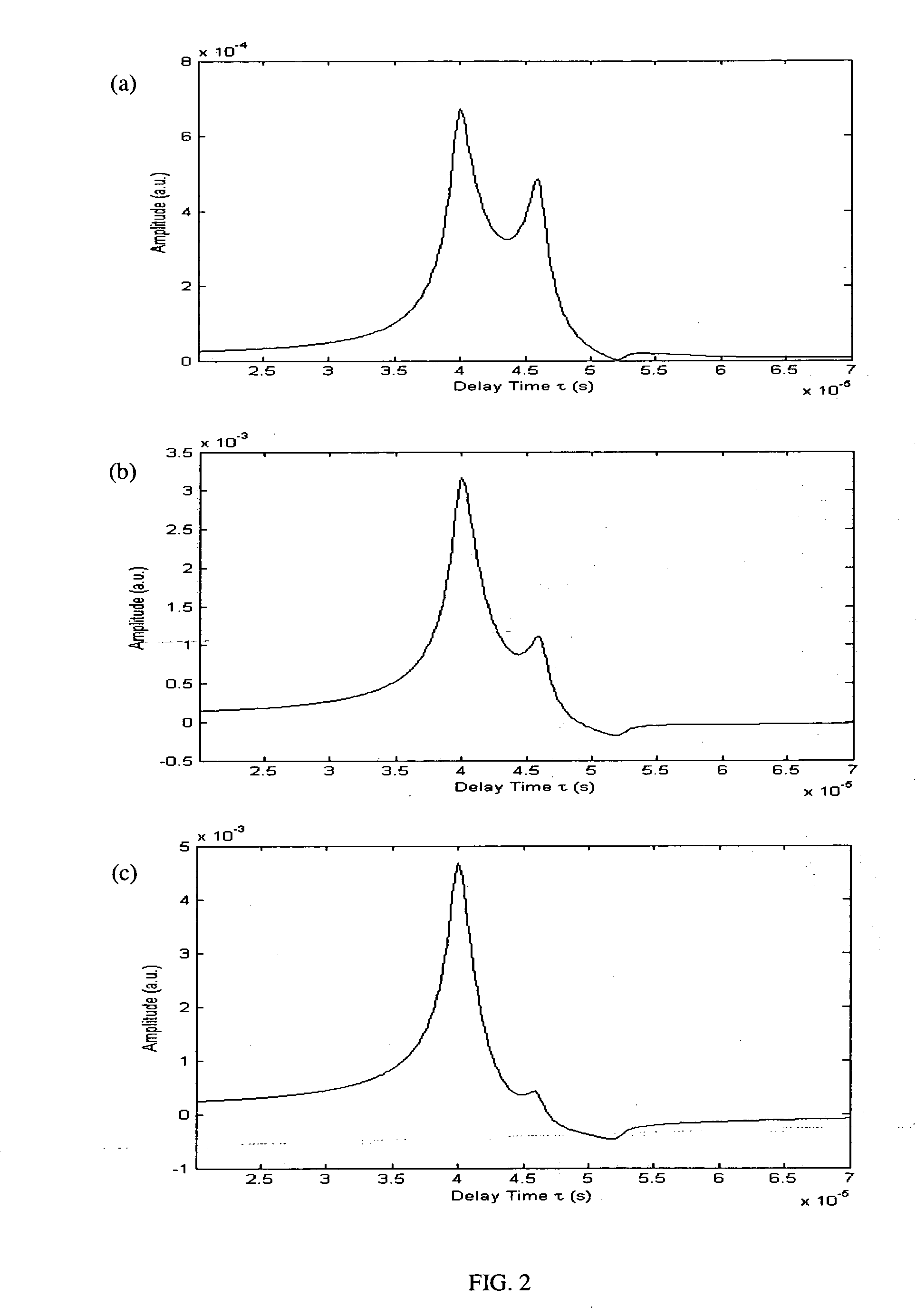Laser photo-thermo-acoustic (PTA) frequency swept heterodyned lock-in depth profilometry imaging system
a technology of laser photo-thermo-acoustic and depth profilometry, which is applied in the field of methodology and instrumentation development, can solve the problems of laser jitter noise, acoustic and thermal noise within the wide bandwidth of the transducer, and the inability to control the depth localization of contrast-generating sub-surface features, and limit the system detectivity and signal-to-noise ratio (snr)
- Summary
- Abstract
- Description
- Claims
- Application Information
AI Technical Summary
Benefits of technology
Problems solved by technology
Method used
Image
Examples
Embodiment Construction
Apparatus
[0054] One embodiment of the frequency-sweep heterodyne PTA imaging system is shown in FIG. 5. The laser used to generate PTA pressure waves is an Ytterbium fiber laser (IPG Photonics, 1064 nm) 1. A frequency-swept (chirp) signal is generated by a function generator (FG, Stanford Research Systems, DS345) 2 to drive the acousto-optic modulator (AOM, Neos Technologies, N15180-1.06-Gap) 3 and modulate the intensity of the laser beam. The chirp signal of FG is triggered by a delay-pulse generator (Stanford Research Systems, DG 535) 4, which is also used to trigger the high-speed analog-to-digital converter (ADC) board (National Instruments, PXI-5122) 5. The laser beam is reflected using an optical mirror 6 and focused onto the specimen 7. A commercial acoustic transducer (Panametrics, V382) 8 is used to detect the acoustical signal. The received signal is amplified by a preamplifier (Panametrics, 5676) 9 and is fed into channel 1 of the ADC board 5. Input channel 0 of the ADC...
PUM
 Login to View More
Login to View More Abstract
Description
Claims
Application Information
 Login to View More
Login to View More - R&D
- Intellectual Property
- Life Sciences
- Materials
- Tech Scout
- Unparalleled Data Quality
- Higher Quality Content
- 60% Fewer Hallucinations
Browse by: Latest US Patents, China's latest patents, Technical Efficacy Thesaurus, Application Domain, Technology Topic, Popular Technical Reports.
© 2025 PatSnap. All rights reserved.Legal|Privacy policy|Modern Slavery Act Transparency Statement|Sitemap|About US| Contact US: help@patsnap.com



